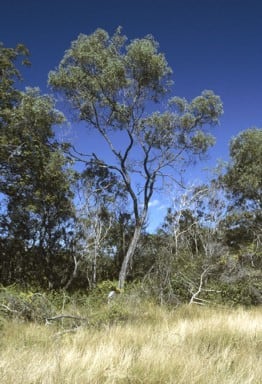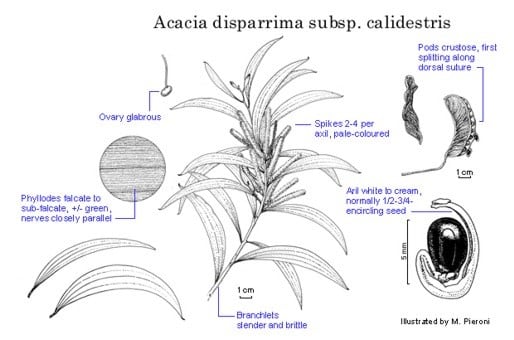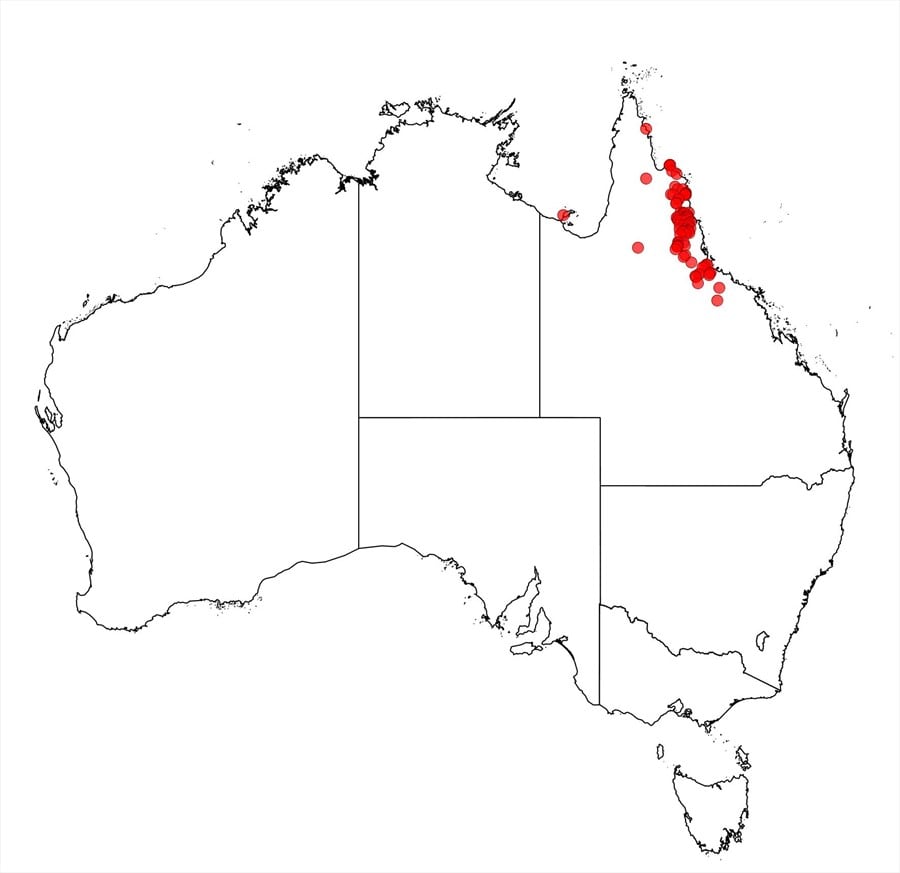Acacia disparrima subsp. calidestris M.W.McDonald & Maslin
WATTLE
Acacias of Australia
Common Name
Dry-land Salwood
Family
Fabaceae
Distribution
Occurs in NE Qld primarily on the Einasleigh Uplands from the Mt Carbine–Mt Molloy region S to Hervey Ra., W of Townsville. Also occurs in coastal areas N of Cooktown in the Cape Melville–Bathurst Bay region including Stanley Is., with a southern outlier near Cranbourne Stn.
Description
Branchlets sometimes +/- pendulous, slender and brittle (snapping with a clean fracture). Phyllodes falcate to subfalcate, often long-tapered at apex, 8–14 cm long, 0.7–2 (–2.5) cm wide, green to pale grey-green or slightly subglaucous, commonly +/- milky green when dry, minor nerves (4–) 5–7 per mm. Spikes 2–4 per axil. Funicle/aril normally to encircling the seed (rarely 2–5-folded as in subsp. disparrima), white (tinged grey) to cream, ageing pale yellow.
Phenology
Flowers March–June.
Habitat
Usually found along seasonally dry creeks, diffuse drainage lines or run-on sites along roadsides in rocky, low, hilly or undulating terrain.
Specimens
Qld: Mt Mulligan, c. 2 km S of Mine Site along pipeline leading to falls on Richards Ck, J.R.Clarkson 5253 (BRI, CANB, DNA, K, MEL, NSW, PERTH, QRS); Hervey Ra., c. 50 km W of Townsville, M.W.McDonald & B.R.Maslin BRM 7627 (BRI, CANB, DNA, K, MEL, NSW, NY, PERTH).
Notes
On Stanley Is. near Bathurst Head, subsp. calidestris grows in heath on exposed sandstone headlands where its maximum height is 1.5 m tall. By contrast the tallest plants of the subspecies occur in the Forty Mile Scrub region, SW of Mount Garnet, where some plants may be up to 12 m tall with the trunks slightly fluted at their base.
FOA Reference
Data derived from Flora of Australia Volumes 11A (2001), 11B (2001) and 12 (1998), products of ABRS, ©Commonwealth of Australia
Author
B.R.Maslin
This identification key and fact sheets are available as a mobile application:
URL: https://apps.lucidcentral.org/wattle/
© Copyright 2018. All rights reserved.









